I enjoy writing these articles for my readers, you guys. I don't accept payment for writing reviews, my opinion on products is my own, but if you find my recommendations helpful and you end up buying something through one of the links I may be able to receive a commission on that. More information
Like many American technological innovations, a tinkerer created the modern snowboard in a garage.
A Michigan engineer, Sherman Poppen, manufactured the first modern board in 1965 by attaching two skis together and tying a rope around them.
His wife mentioned the product, conflating "snow" and "surfer". Almost so that the "snurfer" was born, but luckily that name didn't make it in the end.
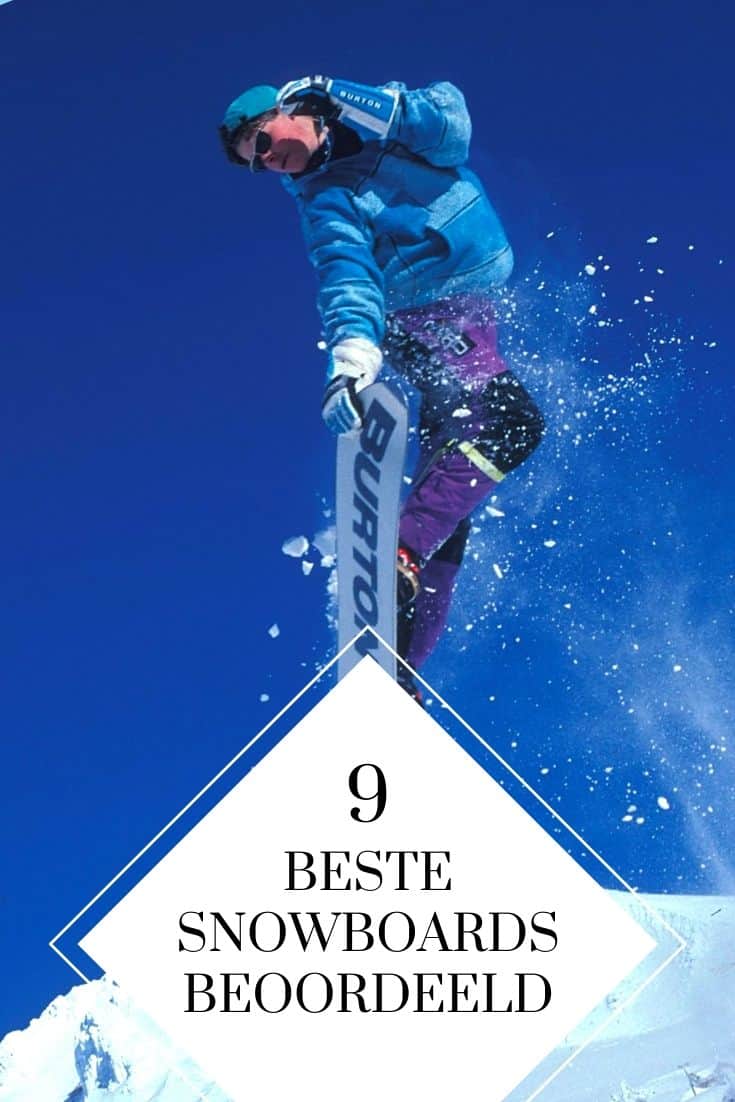
In the meantime sadly he passed away at age 89. No longer a youngster, but his invention has attracted a lot of young people to the slopes.
My favorite at the moment is this Lib Tech Travis Rice Orca. Perfect for men with slightly larger feet due to its volume and perfect for powder snow.
Also check out this Snowboardprocamp review:
Let's take a look at the best snorfers, or snowboards as we call them now:
| Snowboard | Images |
|---|---|
| Overall best choice: Lib Tech T. Rice Orca | 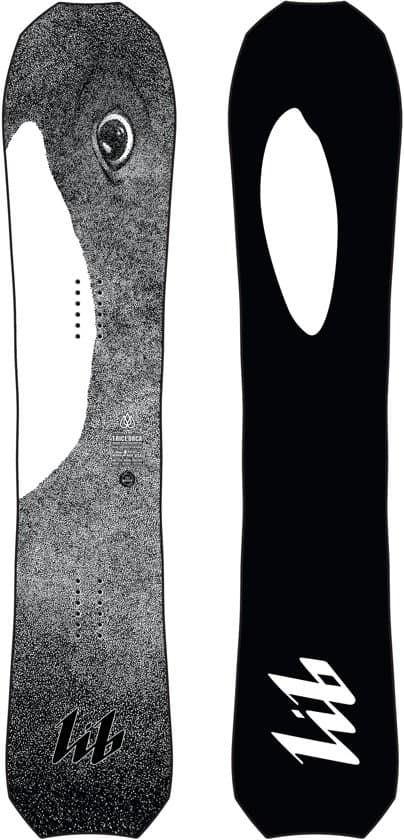
|
| Best cheap snowboard: K2 Broadcast | 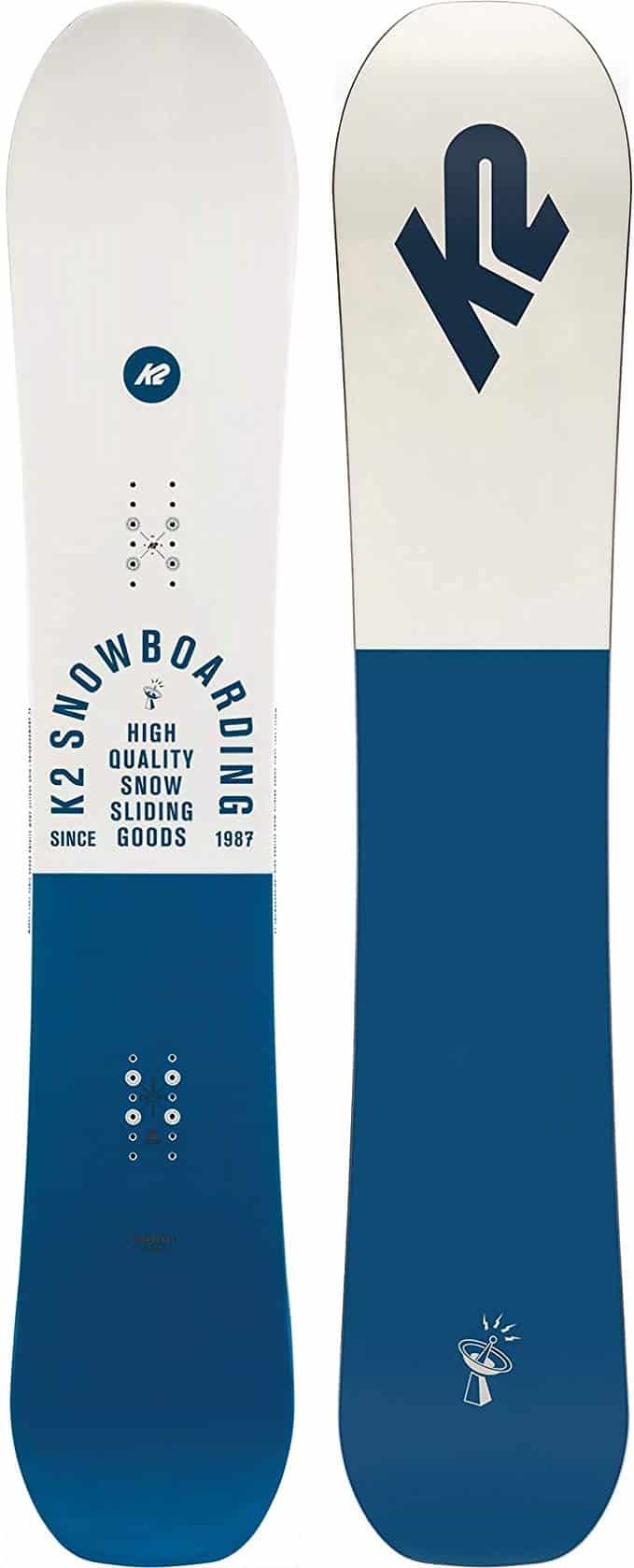
|
| Best snowboard for powder: Jones Storm Chaser | 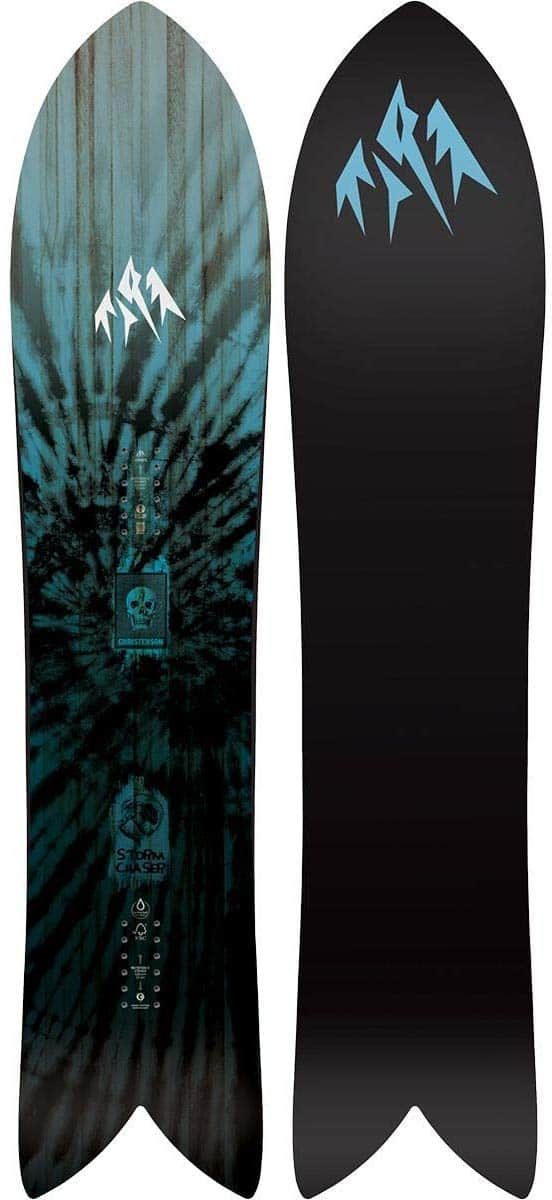
|
| Best snowboard for park: GNU Headspace | 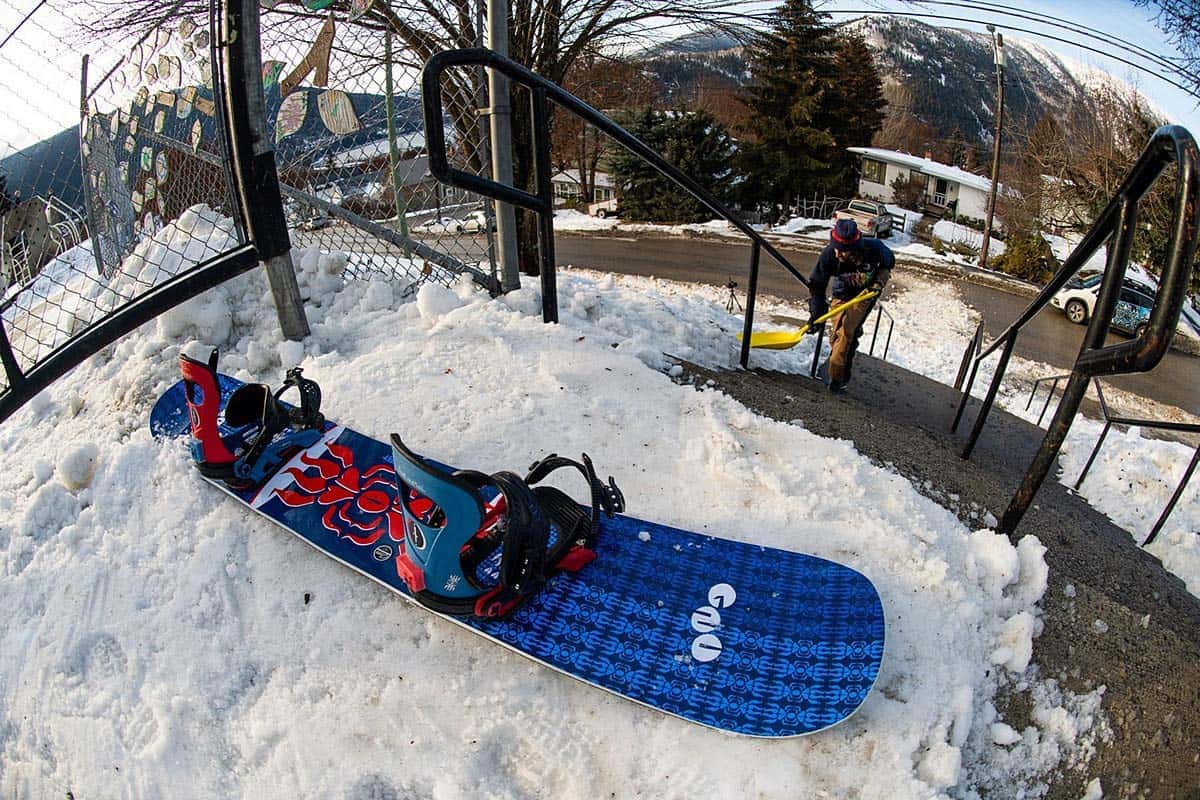
|
| Best All-Mountain Snowboard: Ride MTN Pig | 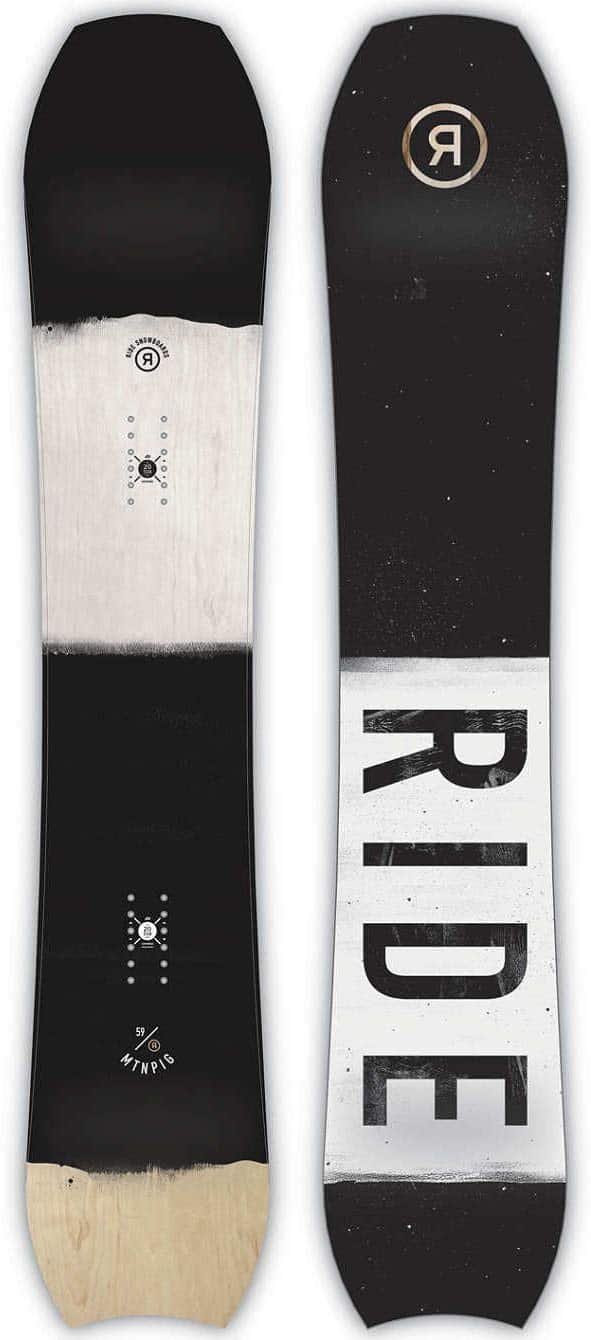
|
| Best Splitboard: Burton Flight Attendant | 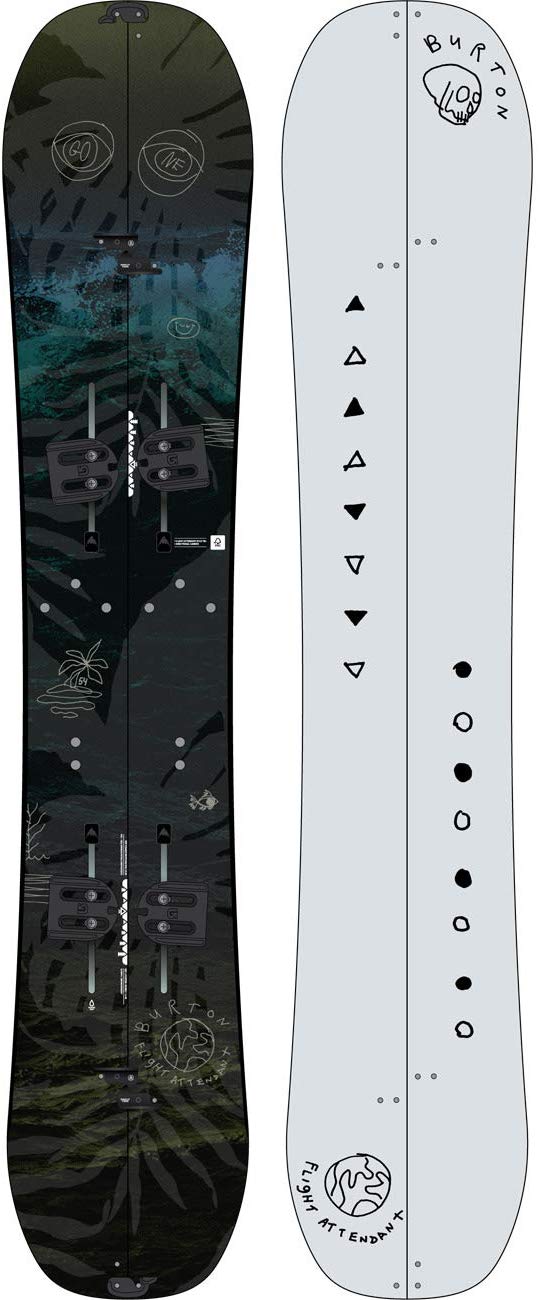
|
| Best snowboard for intermediates: Burton custom | 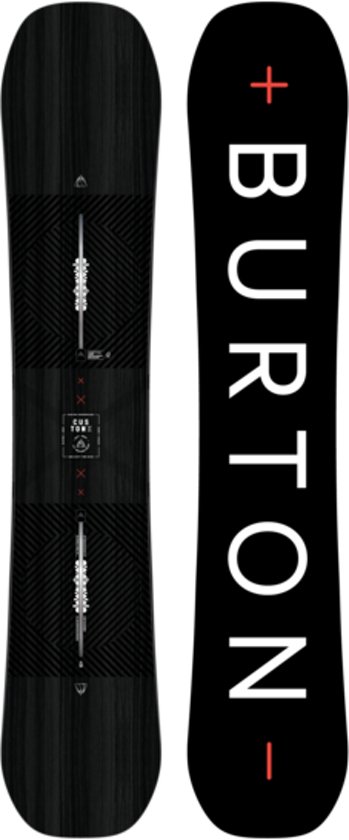
|
| Best snowboard for carving: Bataleon The One | 
|
| Best snowboard for advanced skiers: Arbor Bryan Iguchi Pro Model Camber | 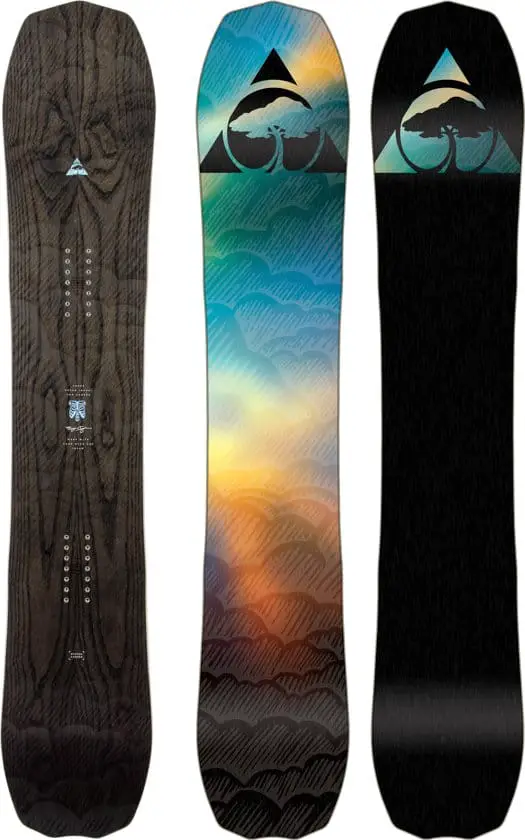
|
What we discuss in this comprehensive post:
- 1 How should you choose a snowboard?
- 2 The questions you must be able to answer before purchasing
- 3 Nine best snowboards reviewed
- 3.1 Overall Best Choice: Lib Tech T.Rice Orca
- 3.2 Best Cheap Snowboard: K2 Broadcast
- 3.3 Best Snowboard for Powder: Jones Storm Chaser
- 3.4 Best Snowboard for Park: GNU Headspace
- 3.5 Best All-Mountain Snowboard: Ride MTN Pig
- 3.6 Best Splitboard: Burton Flight Attendant
- 3.7 Best snowboard for intermediates: Burton Custom
- 3.8 Best Snowboard for Carving: Bataleon The One
- 3.9 Best Advanced Snowboard: Arbor Bryan Iguchi Pro Model Camber
- 4 History of the snowboard
- 5 Snowboard terms to know
- 6 Understanding the construction of a snowboard
- 7 When should I buy a snowboard?
- 8 Can I teach myself to snowboard?
- 9 How long do snowboards last?
- 10 Is it bad to snowboard without wax?
- 11 Should I buy or rent snowboard equipment?
- 12 Conclusion
How should you choose a snowboard?
Choosing a snowboard can be difficult. With so many different styles of boards available, making the right choice is a real challenge if you're not honest with yourself. But if you know what you want, it's great to have all those options.
Before you start looking at what's out there, it's important to think about how and where you drive.
“There is a wide spectrum of snowboard disciplines and preferences, but you only really get to know what you prefer while 'boarding'. Once you've discovered your style, you'll want to look for what's a better tool for that discipline or try to cover as many styles as possible with one snowboard,” says Wave Rave General Manager at Mammoth Lakes, Tim Gallagher.
Most experts will ask you a number of questions, such as: Where is your home mountain? What kind of riding styles do you want to practice with this board? Will this board be an all-rounder, or should it fill a specific need in your style? Where do you normally board? Is there a riding style or is there a rider you want to imitate?
They will also ask about your foot size and weight. This question ensures that you choose a board in the correct width. Don't choose a board that is too narrow: If your boots are larger than size 44, you need a wide board in 'length W'. You also need to know what kind of bindings you want.
The questions you must be able to answer before purchasing
1.What is your level? Are you a beginner, an advanced or a real expert?
2.What terrain do you need your board for? There are different types of boards:
The All mountain, this is an all-round snowboard:
- stiffer and stable at high speed
- a lot of grip
- can with camber of rocker
The Freerider is a board suitable for off-piste:
- longer and narrower to be able to do better carve
- very stable
- suitable for high speeds
The Freestyle is a board suitable for jumps and tricks:
- soft on landing
- flexible for better spins
- light and manoeuvrable
3. What is the right profile or curvature for you?
If you look at the profile of the snowboard, you can come across many different shapes: the Camber (Hybrid), the Rocker (Hybrid), the Flatbase, the Powder shapes or the Fish. They all have their own characteristics: Which one is best for you? Each profile has its own pros and cons!
4. Do you need a wide board or a narrow board? This depends on your shoe size.
Nine best snowboards reviewed
Now let's take a closer look at each of these boards:
Overall Best Choice: Lib Tech T.Rice Orca
The shorter, somewhat thick snowboards have only been around for a few years. Big companies like K2 have done a great job developing the 'volume shift' movement, shortening the board length by a few centimeters and adding a few centimeters in width.

The new Orca takes the volume shift movement to a whole new level. Available in three sizes (147, 153 and 159). The Orca's waist is thick. 26,7 cm for the two longer models and 25,7 cm for the 147.
This width makes it a great powder experience and a solid choice for guys with big feet as it's almost impossible for your toes to drag on the ground.
One of six T.Rice pro models, the Orca is great for short and slashy turns. It is also great fun to board with this model between the trees.
The Serious MagnetTraction cannot be compared with other boards. Each side of the board has seven serrations, so even when you're scraping hardpack, the board still has enough edge to keep it in track. And of course the dovetail makes it easy to hold the front up.
The board is made by Lib Tech, a company with a sense of humor and a DIY ethos. An American company that builds all its boards in its own country, the boards are experienced by snowboarders made with the highest quality and environmentally friendly materials. They reuse materials where possible and they think they make the best boards in the world!
Best Cheap Snowboard: K2 Broadcast
When it comes to 'budget' boards, there isn't much of a difference between entry-level and pro-level. Most companies' entry-level boards start at $400-$450 and top out at around $600. Sure, there are boards that cost $1K and up, but the quality upgrades are only incrementally better and a tough choice if you're on a budget.

The Broadcast is a new form of freeride from the folks at K2, a ski company that has been making skis for decades and was one of the first to embrace powder skis. The Broadcast is one of our favorite freeride boards this year. The fact that it costs about €200 less than some comparable boards is just a nice bonus for your wallet.
The directional hybrid shape is more like camber than reverse camber, making the Broadcast incredibly responsive. It is the cream of the crop for the intermediate and advanced rider. The Broadcast likes to be ridden fast, the camber makes sure the deck performs great.
Best Snowboard for Powder: Jones Storm Chaser
In the past, powder snowboarding was not that popular. For years, cool snowboarders wouldn't ride a powboard if it wasn't for powder. Those days are over, every boarder now rides unabashedly on any kind of snow.

Some powboards are even very good for daily use. Such is the case with the Storm Chaser.
The board was built for one of the best freeriders in the world - Jeremy Jones - by experienced surfboard shaper Chris Christenson, who has been making boards for 26 years.
Christenson is also a passionate snowboarder, splitting his time between Cardiff-by-the-Sea in SoCal and Swall Meadow just south of Mammoth Lakes. His knowledge of different snowboard shapes is clearly reflected in the Storm Chaser. The board is made to ride on a track with deep carves, but performs just as well in deep powder snow.
Jone's version of serrated edge technology makes the board good at holding a rail when the terrain gets slippery. In powder snow, the dovetail contributes to the speed of the board. The updated version is now built even better, with a lighter core of bamboo and carbon stringers to make the Storm Chaser a bit stiffer.
Check the most current prices and availability here
Best Snowboard for Park: GNU Headspace
Although there are few professional models these days, the Head Space is one of two professional models for Forest Bailey. Like fellow Mervin athlete Jamie Lynn, Bailey is an artist and his handiwork graces his freestyle deck.

Available in four sizes, the Head Space is asymmetrical, a design approach that GNU has been pursuing for years. The thought behind it? Because snowboarders are sideways, the turns at the heel and toes at the side are biomechanically different, so each side of the board is designed differently to optimize each type of turn: a deeper sidecut at the heel and shallower at the toe.
The Head Space features a hybrid camber with soft rocker between the feet and camber in front and behind the bindings. The soft flex makes the board agile and easy to handle at low speeds. The core, a combination of sustainably harvested aspen and paulownia wood, delivers a lot of 'pop'.
It's also a great deal and almost won our best budget board contest.
Best All-Mountain Snowboard: Ride MTN Pig
Few planks look quite like the MTN pig, thanks to the crescent tail, snub nose, and aesthetics often associated with natural wood. The hybrid camberboard is one of the stiffest we know.

Built to ride fast and take risks, there's a rocker at the nose, which keeps the front end above the snow on powder days. The camber on the tail section of the board helps you keep an edge when the snow is less than ideal.
The MTN Pig is built for hard and fast riding. If that's not your style, this isn't the board for you. But if you like riding every run like it's your last, give this board a try.
Best Splitboard: Burton Flight Attendant
Burton's snowboards are built by a group of snowboarders. Jump on it and you'll feel like you're riding a board built with love for snowy mountains.

It's not Burton's stiffest board (that would be more like the Custom), but the Flight Attendant is stiff without hurting you. Like most boards in the test, the Attendant has hybrid camber, with a bit of a twist.
Instead of camber between the feet, the Flight Attendant is flat. This is great for powder but can be a bit 'squirrely' on run-outs when snow often gets variable.
The soft nose provides insane amounts of float when the snow gets deep, and the moderate sidecut will put a smile on your face.
Best snowboard for intermediates: Burton Custom
When it comes to legendary snowboards, the Burton Custom is always at the top of the list. It's been in Burton's lineup for decades, back when the famed snowboard company built all of Vermont's boards.

The first Custom was released in 1996. The consistent and great freeride board – along with its stiffer cousin the Custom X – is available in two models:
The Flying V version contains a mix of camber and rocker and is a great board for intermediate riders. It is designed for mountain use and is a great compromise between stiff and soft. With an average stiffness you can ride well all day long.
Custom is a nice compromise of a mix of camber and rocker. The board reacts quickly, but not so fast that you get a lot of 'edges' at the end of a long day when your tired mind and body cause a bit of sloppy technique.
That's one of the many reasons snowboarding is a little easier than it was in the camber-only era when hyper-reactive boards prevailed. That was great for experienced riders. For less experienced riders, that responsiveness was too much of a good thing.
Best Snowboard for Carving: Bataleon The One
To be honest, we weren't happy to see the asymmetrical and attitude-specific GNU Zoid dropped from the lineup this year. The Zoid is one of the best carving boards ever made, but the Bataleon The One is also on that shortlist.

As you might have guessed, The One is for advanced boarders, because if you're still figuring out how to take turns, you've got some work to do before you're ready for a carving board.
With its wide waist, the toe drag problem is no longer an issue. But what makes the One unique is the profile of the board. Although it is a traditional camber from tip to tail, the edges are raised from side to side. So you get all the movement and response of a curvaceous design, without the downside of the edges.
This board also claims to miraculously float you in powder snow!
Medium stiff, carbon stringers that run the length of the deck help you make nice turns. And because Bataleon is still a surprisingly small company, it's unlikely you'll see any other The Ones on the mountain.
Check prices and availability here
Best Advanced Snowboard: Arbor Bryan Iguchi Pro Model Camber
Bryan Iguchi is a legend. Even before it was cool to do, young 'Guch' moved to Jackson Hole to ride some of the steepest slopes in the world.

He was one of the first known professional snowboarders and some believed that the talented athlete committed professional suicide by leaving the competition circuit.
In the end, the industry caught up with him. If you want to ride on steep mountains, one of his two boards should be on your wish list.
Its two models include both a camber and a rocker version. Both are on the stiff end of the spectrum and the camber version is one of the most responsive boards on the planet.
Before you strap in, one of the first things you notice is the weight. It is a bit heavier than most boards.
Some people think it feels good, others may appreciate it less. But the board is especially suitable in situations with multiple obstacles.
One of the first things you realize is the minimal rise of the tip and tail. This is great in the fresh snow as it helps keep the board on top.
If you're a fan of Iguchi and aspire to ride just like him, this might just be the board for you!
History of the snowboard
A big hit in the small town of Muskegon in Poppen, the Snurfer's message quickly spread, including to some employees at a company now called Brunswick. They heard about it, got to work and applied for a license. They sold over 500.000 Snurfers in 1966—a year after Poppen built the first prototype—and about a million Snurfers over the next decade.
Like skateboards of the era, the Snurfer was an inexpensive toy built for children. But the Snurfer's success spawned regional and eventually national competitions, attracting the people who would usher in modern snowboarding.
Early competitors include Tom Sims and Jake Burton, who would go on to start incredibly successful companies with their last names. Two other competitors, Dimitrije Milovich and Mike Olson, would start Winterstick and GNU.
These pioneers built their businesses in the 80s. In the mid-80s, only a handful of resorts allowed snowboarding. Fortunately, snowboarders were welcomed in most resorts in the early 90s.
In the 90s, snowboard design was similar to ski designs: all boards had traditional camber and straight edges.
In the beginning, Mervin Manufacturing, the brand that builds Lib Tech and GNU boards, introduced two revolutionary changes. In 2004 they introduced MagnetTraction. These jagged edges increased edge control on ice. In 2006 Mervin introduced reverse camber under the name Banana Tech.
Something very different from the traditional camber of skis and snowboards; This was perhaps the biggest change in snowboard design to date. Backward camberboards came loose and reduced the chance of an edge.
A year later, the hybrid camber was born. Most of these boards have inverted camber between the feet and camber at the tip and tail.
Fast forward a decade and surf-inspired shapes begin to emerge. Initially marketed for powder snow, the designs evolved and many riders chose to use these boards with minimal tails for everyday use.
And now for the winter of 2019, choices abound. “It's the most exciting time ever in snowboard design,” said industry veteran, major mountain competitor and General Manager of Wave Rave in Mammoth Lakes, Tim Gallagher.
So do your homework and make the right choice so that every ride and every turn is an experience and you can make the most of your time on the mountain!
Snowboard terms to know
- Backcountry: Terrain outside resort boundaries.
- Base: The bottom of the snowboard that slides on the snow.
- Corduroy: the tracks left by a snowcat after taking care of a course. The grooves in the snow look like corduroy pants.
- Directional: A board shape where the riders pose is off-center, usually a few inches back.
- Duckfooted: A stance angle with both toes pointing out. More common for freestyle riders and riders who switch a lot.
- Edge: The metal edges that run along the perimeter of the snowboard.
- Effective edge: The length of the steel edge that comes into contact with the snow when making turns.
- Flat Camber: A board profile that is neither concave nor flat.
- Flex: the stiffness or lack of stiffness of a snowboard. There are two types of flex. Longitudinal flex refers to the stiffness of the board from tip to tail. Torsional flex refers to the stiffness of the width of the board.
- Float: A board's ability to stay on top of deep snow
- Freeride: A riding style aimed at groomers, backcountry and powder.
- Freestyle: A style of snowboarding that includes a mix of terrain park and non-terrain park riding.
- Goofy: drive with your right foot in front of your left.
- Hybrid Camber: A snowboard shape that combines reverse camber and hybrid camber profiles.
- MagneTraction: A trademark serrated metal edge on plates built by Mervin manufacturing, the parent company of GNU and Lib Tech. This is for a better edge on ice. Other manufacturers have their own versions.
- Pow: short for powder. Fresh snow
- Rocker: The opposite of camber. Often called reverse camber.
- Regular foot: ride with your left foot in front of your right.
- Reverse Camber: A snowboard shape resembling a banana that is concave between the tip and tail. Sometimes called "rocker" because a reverse camber board looks like it could rock back and forth.
- Shovel: Lifted parts of the board at the tip and tail.
- Sidecut: The radius of the edge that runs along a snowboard.
- Sidecountry: Terrain that is outside the resort boundaries and accessible from the resort.
- Traditional Camber: a snowboard shape similar to a mustache, or convex between the tip and the tail.
- Splitboard: A board that splits into two ski-like shapes so riders can climb the mountain like an XC skier and reassemble when it's time to descend.
- Twintip: A board with an identically shaped nose and tail.
- Waist: the narrowest part of a board between the bindings.
Understanding the construction of a snowboard
Building a snowboard is a lot like making a good hamburger. While new and better ingredients can improve both burgers and snowboards, the process of making them hasn't changed much.
“The construction of plates has basically remained the same for the past 20 years. By that I mean that there is a base of polyethylene plastic with a border around it. There is a layer of fiberglass. A wooden core. A layer of fiberglass and a plastic top sheet. Those basic materials haven't changed much. But there has been a lot of innovation in each of the specific materials that improve the ride performance and weight of the boards we see on the market today,” said Senior Design Engineer at Burton Snowboards, Scott Seward.
One of the most important parts of your board is the core. Mostly built of wood – different types change the style of the ride.
Many manufacturers even use different types of wood in a single core. For example, Lib Tech boards contain three different types of wood. Some manufacturers build foam cores. Builders sculpt the cores, as it were.
Thinner where you need more flex and thicker where you don't. Unlike a hamburger, you should never see the core of your board. “If the customer ever sees the core, then I've been doing my job wrong,” Seward said.
The “cheese and bacon” on the burger represents the layers of fiberglass. These fiberglass layers affect the ride quality of your board.
Higher boards often have carbon stringers – narrow strips of carbon fiber running the length of the board for extra stiffness and pop.
Epoxy covers the board and makes it a whole. We're not talking about the toxic epoxy of the past: Organic epoxy is one of the most recent innovations at companies like Lib Tech and Burton.
Don't underestimate the importance of epoxy as it holds the board together and brings character to life.
After the second coat of epoxy, the board is ready for the topsheet. Once that is added, the top is placed in the mold and the board is pressed to it, all layers are bonded together and the camber profile of the board is set.
While solid machinery is critical to building snowboards, there's a lot of craftsmanship involved. “Most people are amazed at the amount of manual work involved,” said Seward.
The board is under the press for about 10 minutes. Then the board goes to finishing, where craftsmen remove excess material and add sidecuts. Then the board is sanded on all sides to remove excess resin. Finally, the board is waxed.
When should I buy a snowboard?
While it can be difficult to think ahead for the next season and buy 6 months in advance before actually using your new board, the best time to buy one is the end of the season (March to June preferably ). The prices are then very low. Also in dPrices are still low this summer, but stocks may be more limited.
Can I teach myself to snowboard?
You can learn to snowboard yourself. However, it is better to take a lesson first, otherwise you will waste a few days figuring out the basics. A few hours with an instructor is better than a few days of trying on your own.
How long do snowboards last?
About 100 days, mBut it also depends on the type of rider. If you're a park rider doing jumps and big drops all day, chances are you'll be breaking your snowboard in half within a season!
Is it bad to snowboard without wax?
You can ride without wax and it won't harm your board. However, it is a great feeling to ride a freshly waxed board. And it's an even better feeling when you wax it yourself!
Should I buy or rent snowboard equipment?
Rent gear first and take a lesson if you've never snowboarded a day in your life. Only buy a snowboard if you already have an idea of the terrain you want to ride. If you know that, you can adapt your equipment accordingly and you will perform better!
Conclusion
One of the best ways to find a good match is to do your homework. It is wise to talk to more than one seller, expert or friend about their experiences, they may be able to advise you well.
“There is no right or wrong way to snowboard. If you're having fun exploring the mountain and pushing yourself all the time, you're doing it right," Gallagher said.

